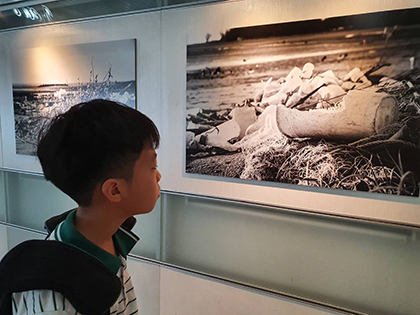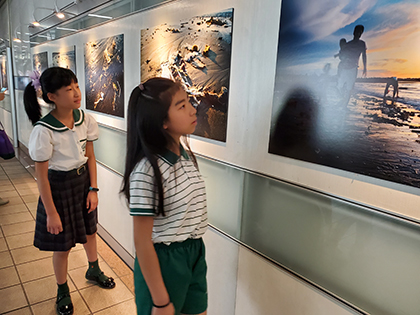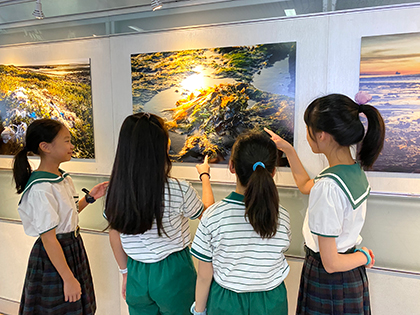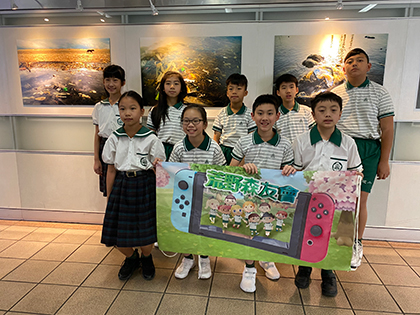Organized by Hao-Cheng
Marine Debris Exhibition
| Wu, Gang-Yueh – Marine Litter Photo Essay: Plastic Waves | Mr. Wu is a professor in the College of Communication at National Chengchi University. He was fascinated by the beauty of the sea and the sky, but at the same time he had discovered that no matter which seashore he went to, it was full of garbage. Therefore, he began to develop interest in getting to know the marine debris and decided to set up a website recording each marine debris he had discovered. Through his photos, he hopes to make the environmental issues more visible in order to increase environmental awareness, discussions, and initiatives. |
|
| Sep 2 – Sep 27, 2020 | ||
| Taipei Metro - Zhongxiao Fuxing Station Art Gallery |
Wu, Gang-Yueh’s photo essay topics include Trashion (2017), Photo-fragmentation, Bottled Water, Plastic Waves, Trashion (2021), and Handmade Drink Glory. |
I walked past by Professor Wu’s Plastic Waves exhibition at the Taipei Metro station on my way to school every day. It was shocking to see the heartbreaking photos of seashores full of plastic bottles and plastic products. I’ve never thought that my favorite summer vacation spot would have so much hidden garbage. What shocked me even more is that according to the research, the amount and age of plastic waste have become sufficient for scientists to identify a new geological period – the Plastic Century.

Source: Wilderness Crossing

Source: Wilderness Crossing
There are at least 8 million tons of debris entering the ocean each year. That is equivalent to dumping a truck load of waste into the ocean every minute. The debris have caused significant impact to the marine ecosystems and species such as fish, shrimps, and seashells. The microbeads can travel to the bottom of the ocean through currents, contaminating the habitat and its species. The microbeads can absorb environmental hormones, heavy metals, and other harmful substances, which can cause health hazards with horrific consequences. Through Professor Wu’s retouching and shooting techniques, the photos of garbage lying on the beach are less scary than what we had actually witnessed when we participated in beach cleanup activity. However, each photo is a direct reminder and warning of our “unintentional mistakes” toward the ocean.

Source: Wilderness Crossing

Source: Wilderness Crossing
However, looking at the amount of garbage in the photos, I can’t help wondering how we can possibly clean up all the garbage on the beach with only beach cleanup activities? Should we start with using fewer plastic products to reduce plastic waste? We can start with making small changes to our daily habits to reduce the use of disposable plastic products. For example, we can have less frequent food delivery, develop a habit of recycling, and use all resources more efficiently. We should not only remind ourselves to change for a better environment, but also promote the ideas to classmates and family members. One by one, if we can persuade more people to join and take initiatives, we can form a plastic-free comfort zone. I believe this will be the best starting point for loving and protecting the ocean.

Source: Wilderness Crossing

Source: Wilderness Crossing

